Eggs are an extraordinary food! Here is everything you ever need to know about them, from the varieties, what the different labels mean, and storage tips.
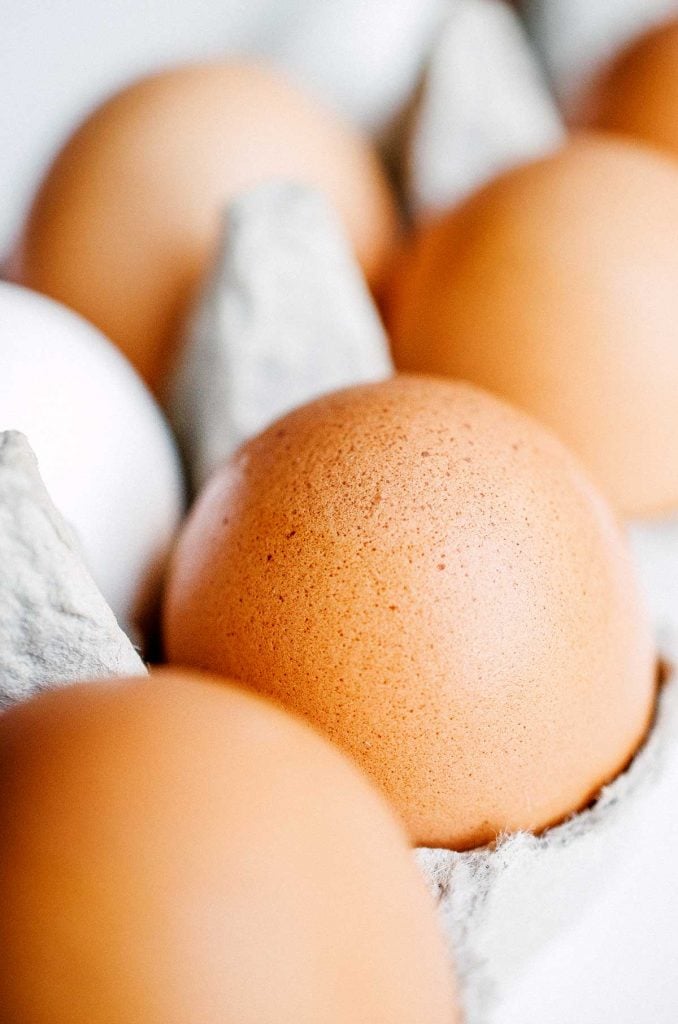
Ah, the humble egg. Eat it by itself for breakfast, or whip it into a meringue masterpiece. And at 6 grams of protein per egg, it’s a great ingredient to keep in your vegetarian repertoire!
But how much do you really know about eggs? Like, what do the colors mean? And what is free-range, actually? We’re breaking down everything you need to know about eggs before we dive into the egg-cellent recipes this week!
What do the color of eggs mean?
The color of the egg shell can range from white to brown to olive green. The difference lies in the breed of the hen. And funnily enough, you can determine what color a hen’s eggs will be by the color of her earlobe (where exactly a hen’s earlobe is beats me). Nutritional content is the same, regardless of shell color.
The color of the yolk is determined by the hen’s diet. The rule of thumb here is the darker the yolk, the more likely that the hen was free-range. Darker yolks are attributed to diets higher in green plants and deeply-pigmented plants materials, easily accessible by free-range chickens. Lighter yolks are a result of a diet high in wheat, barley, and corn meal.
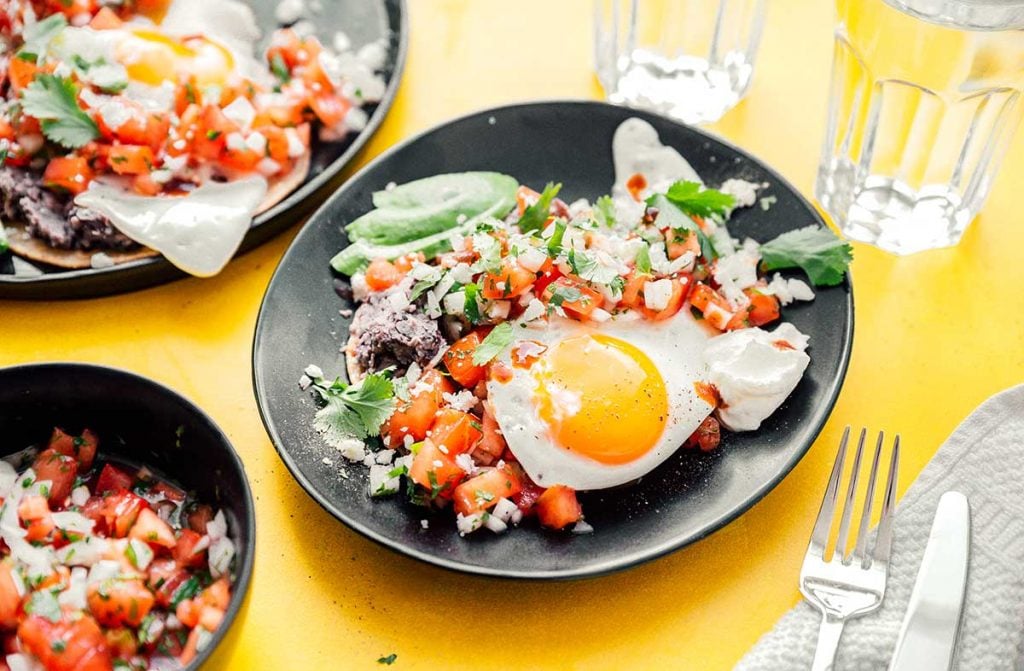
What do the grades of eggs mean?
Grading of eggs is voluntary and is conducted by the USDA. The grade of an egg characterizes the quality of both the exterior and interior.
- AA Eggs: Have a small air pocket with a white that stands well around the yolk
- A Eggs: May have a larger air pocket and a thinner egg white
- B Eggs: The air pocket may be large with possible staining on the shell
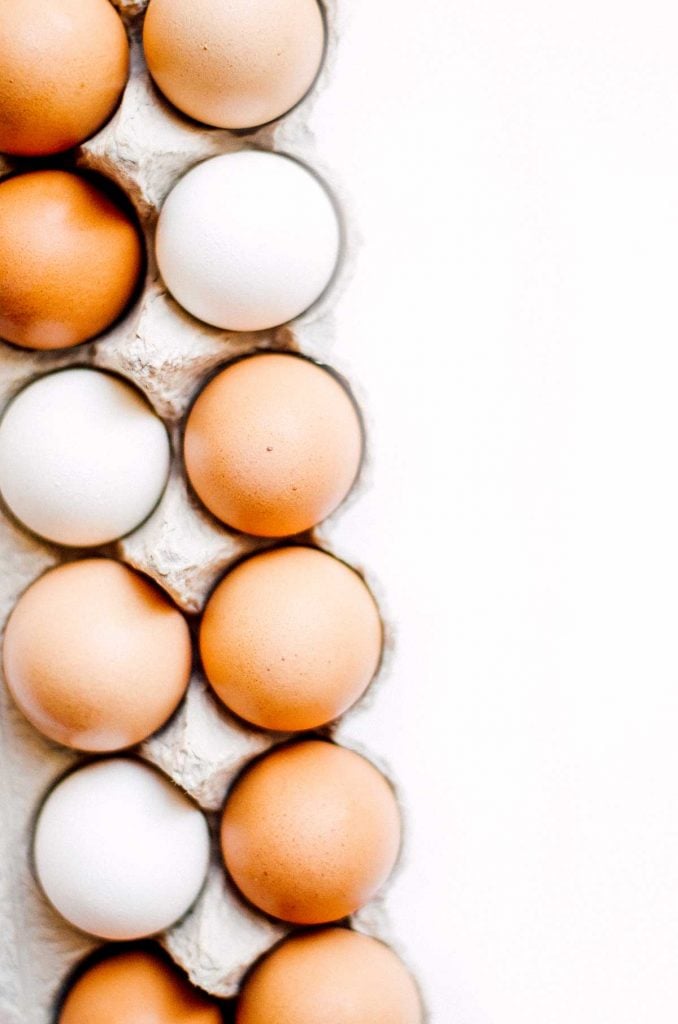
What do egg labels mean?
You may see a variety of different labels slapped onto your carton of eggs. Here’s what they all mean!
- Cage-Free: Hens are not confined to a cage; however, they may not be running happily around a field. Cage-free can constitute a wide array of chicken environments, from cramped in a warehouse to wandering around outside.
- Free-Range: Hens are free to roam outside for at least part of the day.
- Natural: The term “natural” is not regulated so this could mean anything the manufacturer wants it to mean.
- Organic: The term “organic”, unlike “natural”, is mandated. Certified organic hens are fed organic vegetarian diets free from genetically-modified foods or foods produced with pesticides. The hens do not receive antibiotics or vaccines, and are often also cage-free.
- Pasteurized: Pasteurized eggs have been heated in their shells to 140 degrees F for 3.5 minutes. This kills many of the bacteria, namely Salmonella, making this a good option for those with weakened immune systems.
Side note: The eggs you buy at the store are not unhatched baby chickens. 99% of the time these are eggs that went unfertilized. Were they to have been fertilized, the yolk would have been the nutrient source that the baby bird would have used to grow. Hens will typically lay an egg every 25 hours, fertilized or not.
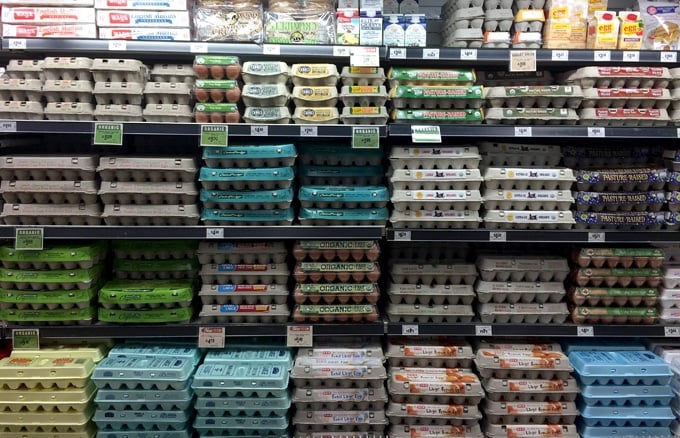
How to store eggs
Refrigerated: Refrigerated eggs will stay good for about a month. How can you test whether your eggs are still good? Place an egg in a full glass of water. If the egg lies flat on the bottom, it is fresh. If it stands up, it’s on its way to bad. And if your egg floats, toss it.
Room Temperature: It’s okay to store eggs at room temperature depending on production method. In America, eggs are power washed before selling. This removes the natural coating that protects the eggs from nasty bacteria, so we must keep our eggs below 40 degrees F to ward off potential foodbourne pathogens. Some countries (like most European countries) choose to leave this layer on, so if you go abroad and panic because the eggs are all sitting out, it’s okay!
Frozen: Egg whites tolerate freezing well, though the yolks do not. Separate the whites from the yolk and place in an ice cube tray to freeze.
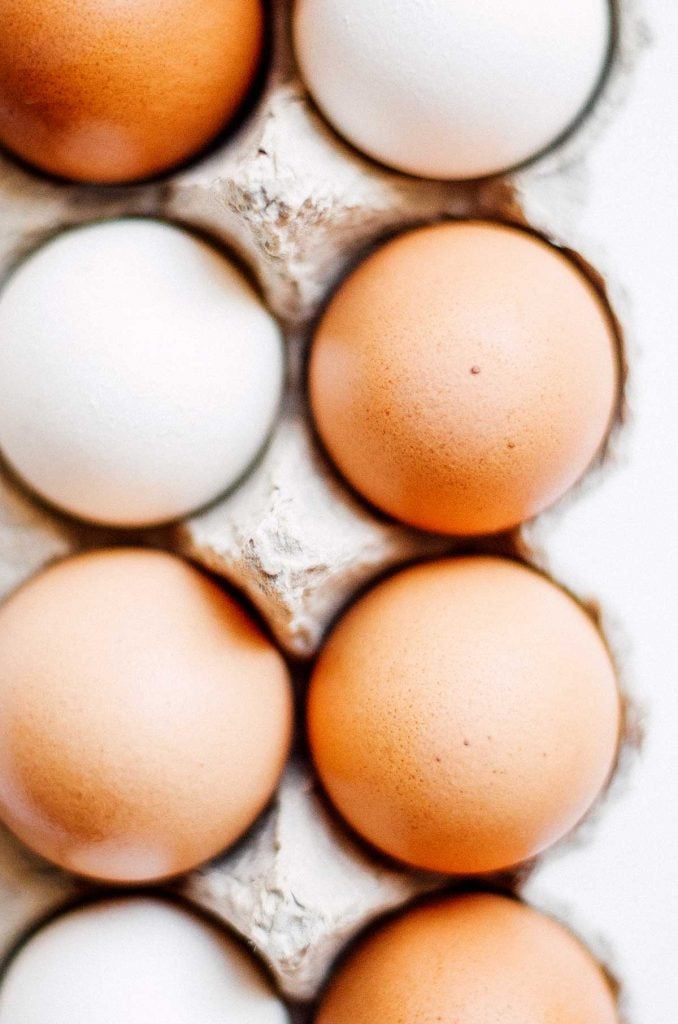
How to cook eggs
Hardboiled: Set eggs in a pot full of cold water. Set the pot over high heat and bring to a boil. When water boils, remove pot from heat, cover, and allow eggs to stand about 10 minutes. Remove from water and drop into a cold water ice bath to stop the cooking process. Perfect for Deviled Eggs!
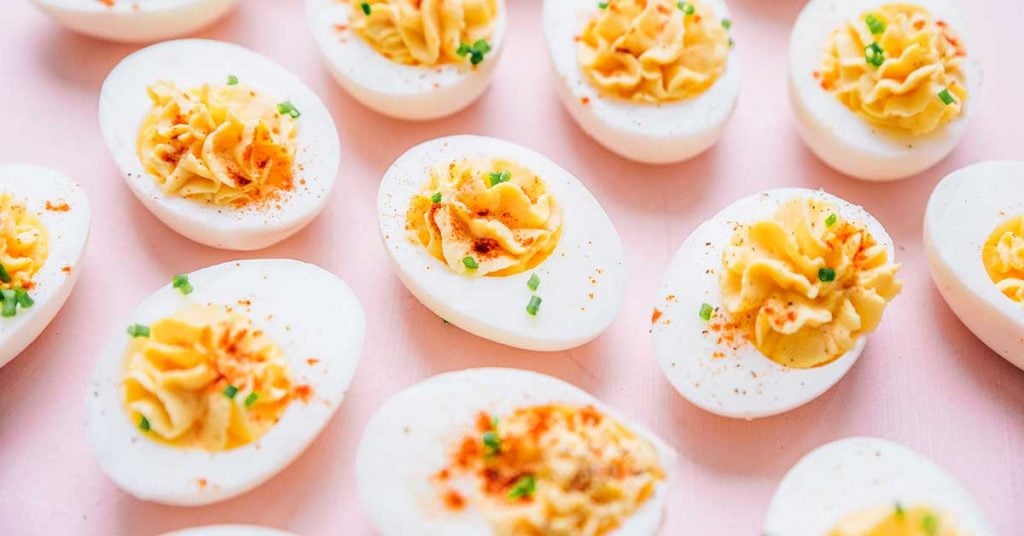
Scrambled: The best ever scrambled eggs are those of my grandmother, Reeree. To make Reeree Eggs, whisk your eggs up in a bowl. Add in a dash of milk for each egg, and continue to whisk. Get yourself one slice of White American cheese for each egg, tear those up, and throw them in too. Cook in a skillet over low heat, constantly stirring and scrambling, until eggs are cooked and fluffy and amazing.
Sunny-Side Up: Carefully crack egg into a pan and cook over high heat, covered, for about 3 minutes.
Poached: Bring a pan of water to a slow simmer and add a dash of white vinegar. Crack your egg into a shallow cup, then gently ease it into the water. Cook for 2 to 4 minutes. Remove and set on a paper towel to dry. Great on Savory Oatmeal!
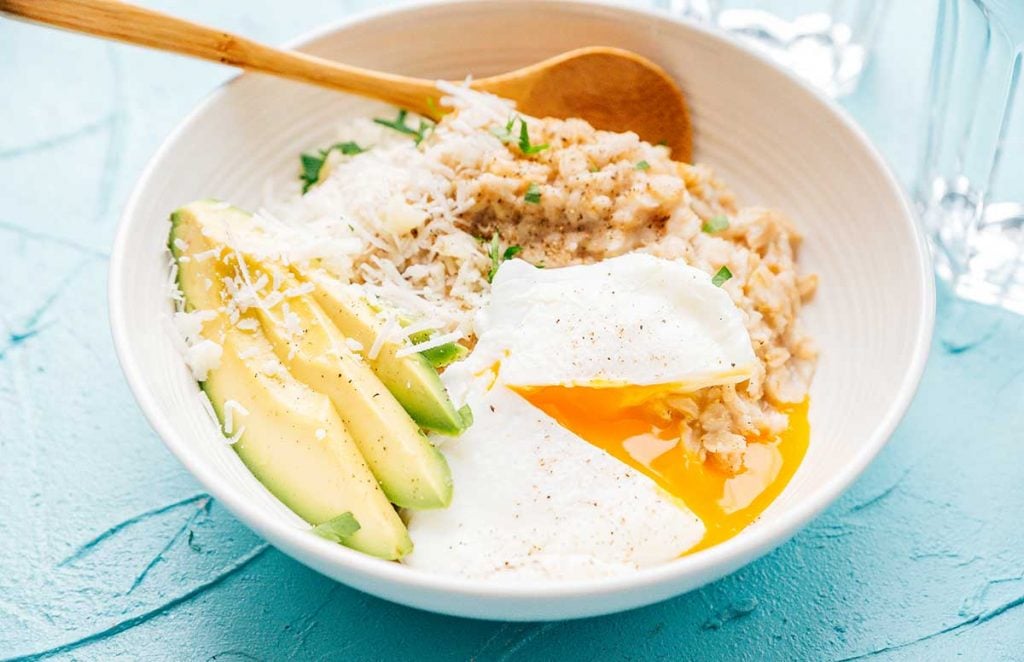
Some of our favorite egg-centric recipes include:
- Shakshuka
- Kimchi Fried Rice
- Southern Eggs Benedict
- Korean Udon Noodles
- The Perfect Veggie Omelette
- Omelette in a Mug
- Easy Leek Quiche
Common uses for eggs
Is there anything an egg can’t do? This versatile ingredient is used for a wide range of purposes in cooking. Here are a few of our favorites:
Emulsifier: You know how water and oil don’t mix? Well egg yolks can make them mix. Lecithin, found in the yolk, is a phospholipid, so it has a side that loves water and a side that loves oil. The egg yolk makes water and oil stick together in what’s called an emulsion. Some common egg emulsions include mayonnaise, oil and vinegar salad dressings, and hollandaise sauce. It’s even used in fruit curds!
Glaze: A quick brush of whole egg on baked goods (like galettes) gives them a shiny gloss. A glaze of just egg whites gives a matte look and aids in browning.
Leavening Agent: Can be used to make things rise! Use the whole egg for more decadent foods, like Sweet Potato Cookies. Use the egg whites for more delicate recipes, like Angel Food Cake.
The uses for eggs are boundless. I even feed eggs to my dog!
Egg nutrition facts
Nutrition info for 1 large egg (about 50g)
- Calories: 70
- Carbohydrates: 0g
- Protein: 6g
- Fat: 5g, 185 mg cholesterol
- The Egg White: 3.5 g protein, 0.05g fat, Magnesium, Potassium, Sodium
- The Egg Yolk: 2.5 g protein, 4.5 g fat, Vitamin A, Vitamin D, Vitamin B12, Calcium, Phosphorus, Choline, Folate
Worried about your cholesterol? Research is beginning to indicate that our dietary cholesterol may not have as great of an impact on our blood cholesterol as we previously thought. Recent studies suggest that egg consumption of 1 egg per day is not related to increased risk of heart disease in healthy populations. For those with high LDL (Low Density Lipoprotein) and total cholesterol, however, reduction of dietary cholesterol may be beneficial.
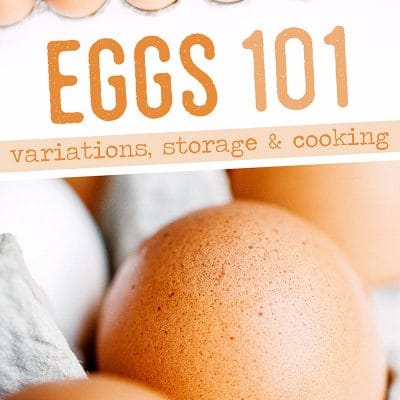
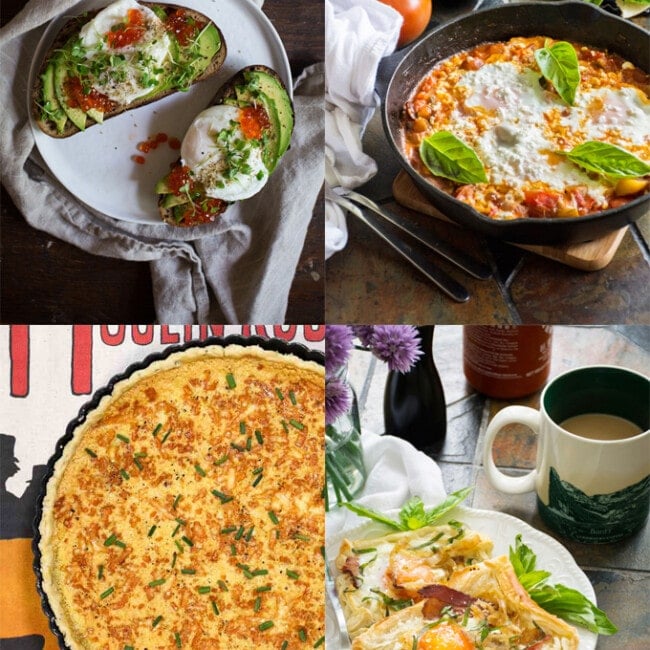
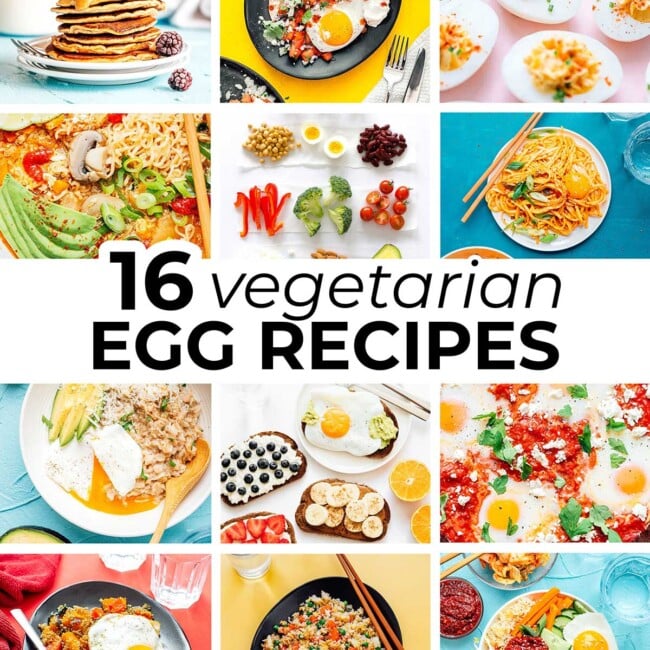
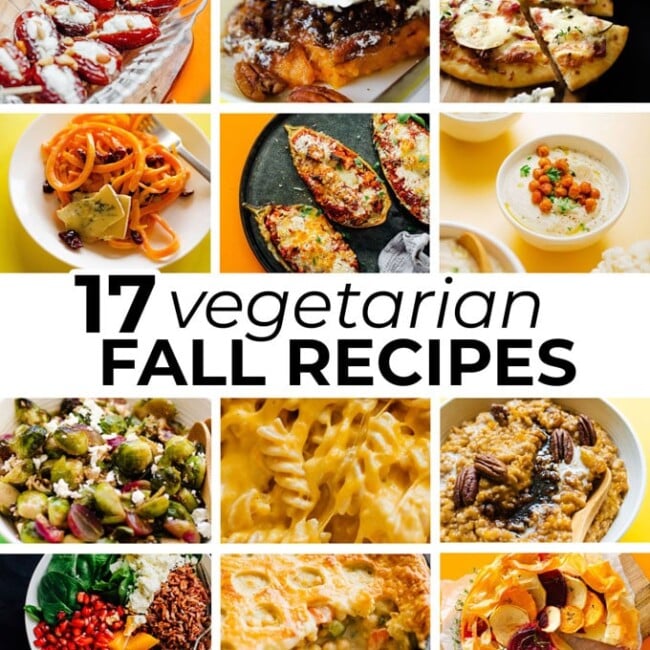
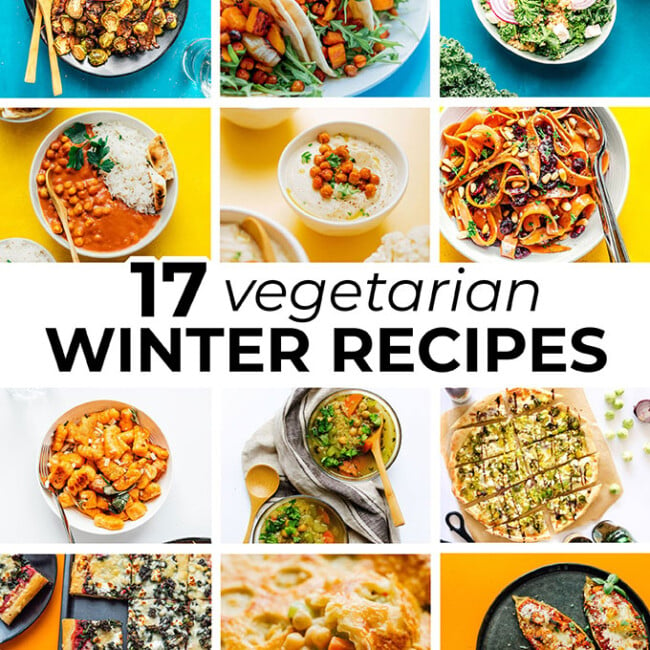
Drue Naccarato says
What does it mean when the white of the egg sticks to the inside of the shell? We get fresh eggs from our neighbor and several eggs float in water, but you commented that they are no good. I thought the floating was due to small pin holes in the shell. Please let me know if these eggs are safe to eat. Thank you
Sarah says
Usually if you’re hard boiling fresh eggs then the white is more likely to stick, so slightly older eggs are better for boiling. The floating means that there is more air in the shell due to the egg being old – use your best judgment on taste and smell!
vikas says
It went well actually, it was going well enough to serve my mom. and I did of course.